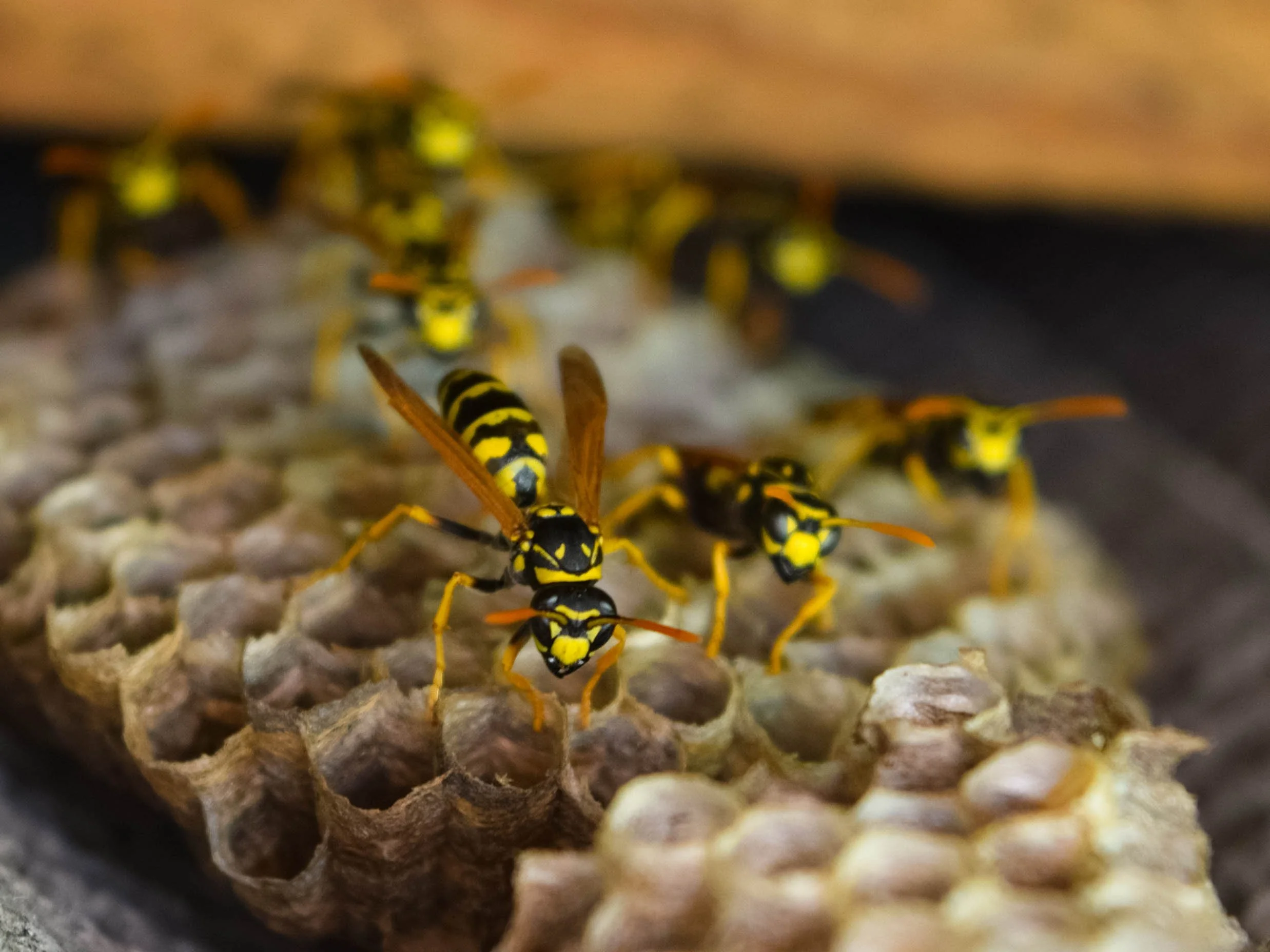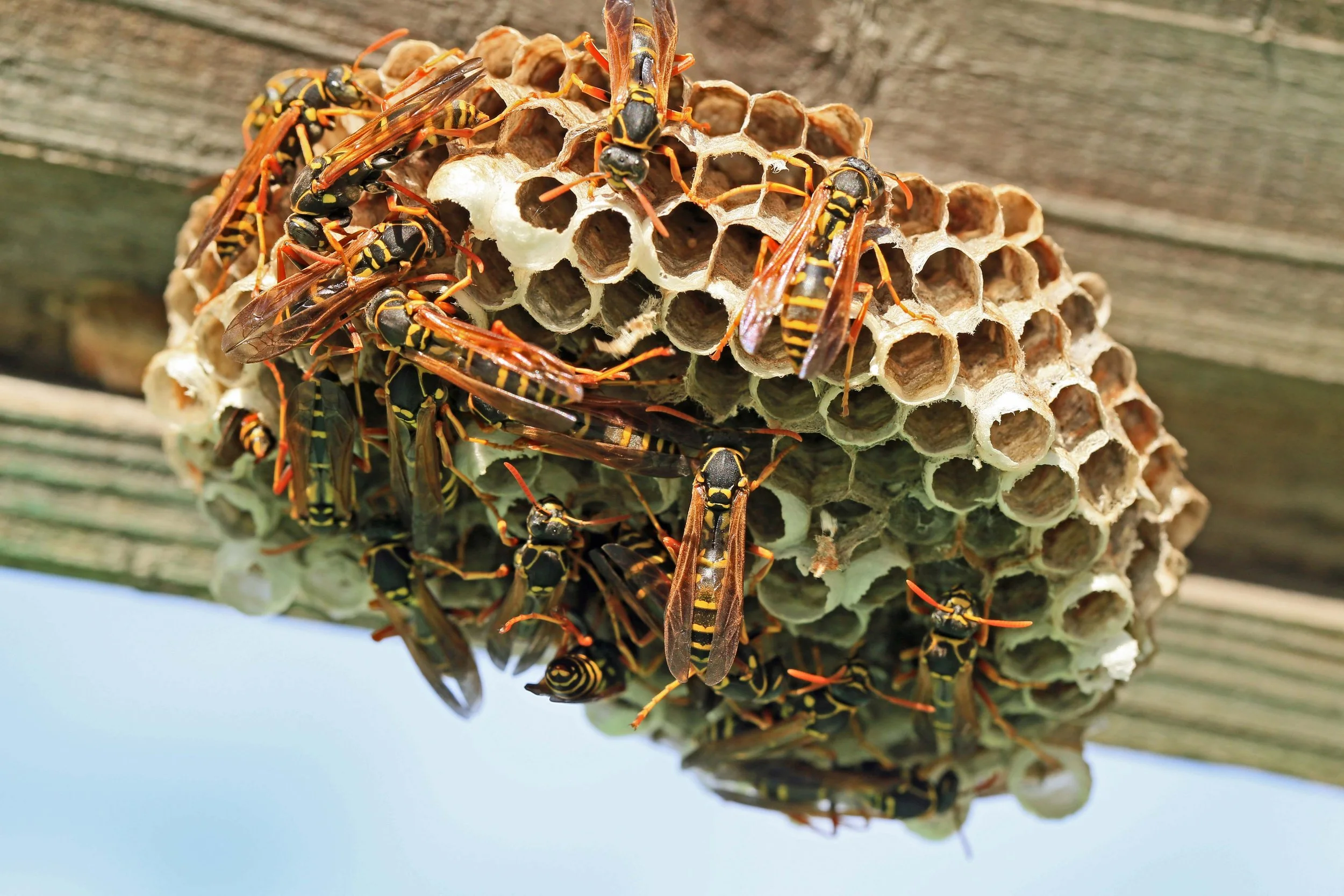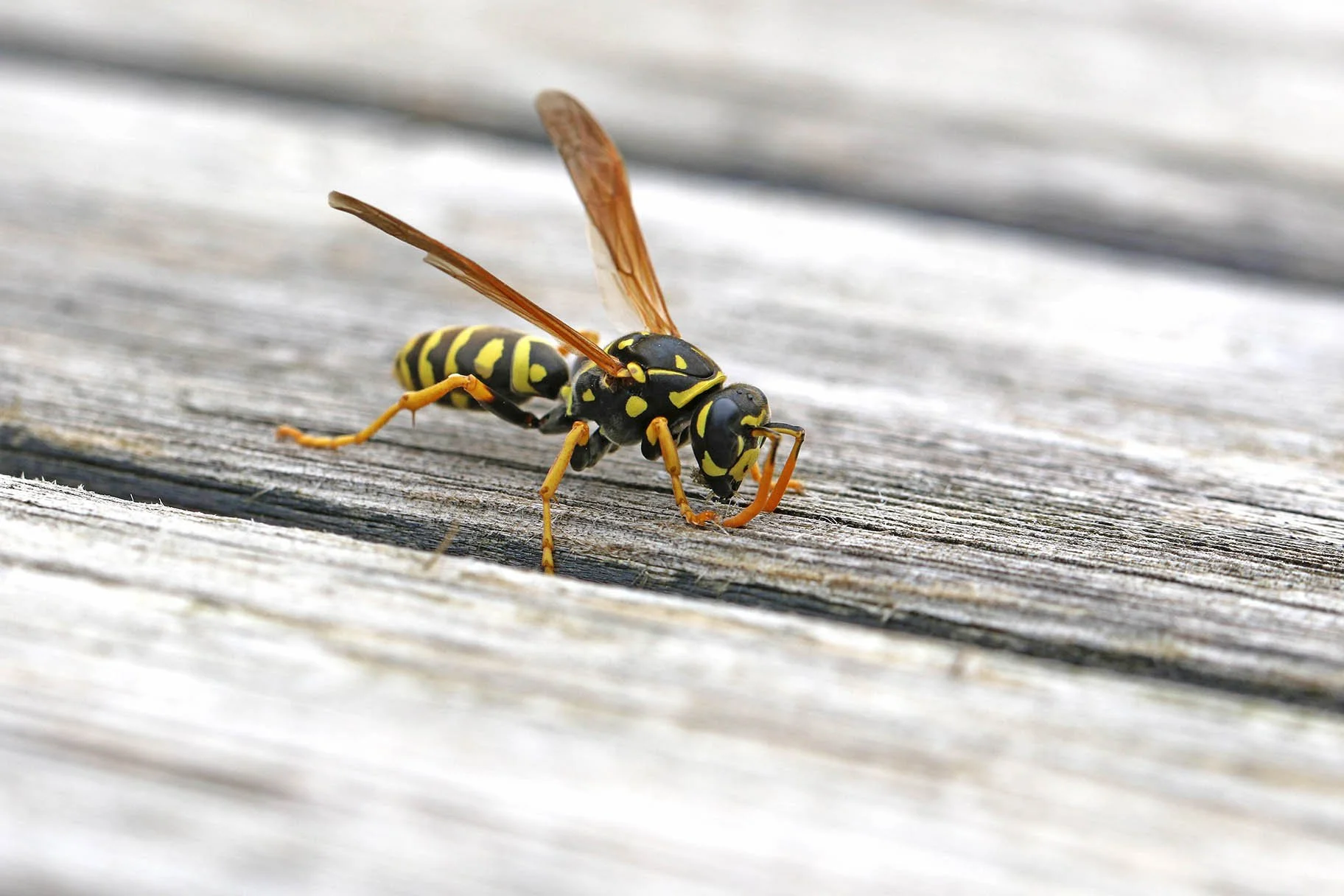WASPS
Paper wasps are a frequent sight across Southern California, especially during the warmer months of spring and summer. These social insects are easily recognized by their slender bodies, long legs, and the umbrella-shaped nests they construct. You’ll often find these nests tucked beneath eaves, inside attics, under deck railings, or even in shrubs and trees near your home. Their nests, made from a papery material created by chewing wood fibers mixed with saliva, can grow rapidly if left undisturbed.
While paper wasps serve a beneficial role in the ecosystem by helping to control garden pests such as caterpillars and other soft-bodied insects, their proximity to human activity can create serious safety concerns. Unlike bees, which can sting only once, paper wasps are capable of stinging multiple times, and they become highly aggressive when they feel their nest is threatened.



Nesting Habits
Paper wasps are known for their distinctive open-celled nests, which they construct by chewing wood fibers and mixing them with saliva to form a papery material. These nests are typically found in sheltered areas such as under eaves, roof overhangs, porch ceilings, or inside sheds. Unlike other wasp species, paper wasps tend to build smaller colonies, with nests usually housing fewer than 100 individuals. They favor quiet, undisturbed locations and are known to return to the same nesting sites year after year if the nests are not removed. Their nest-building activity generally begins in the spring, initiated by a single queen, and continues throughout the warm months as the colony grows.
-
Under eaves and overhangs
Inside attics and wall voids
Beneath decks and railings
-
In spring, overwintered queens emerge to establish new colonies.
Initial nests are small, but can expand significantly by summer, housing hundreds of wasps.
By late summer, new queens and males are produced, and the colony's activity declines as winter approaches.
-
Diet: Primarily feed on nectar and other insects.
Aggression: Generally non-aggressive but will defend their nest vigorously if disturbed.
Risks Associated with Paper Wasps
These insects are highly territorial and will aggressively defend their nests if they feel threatened. Their stings are painful and can trigger allergic reactions ranging from mild swelling to severe anaphylaxis in sensitive individuals. Unlike bees, paper wasps can sting multiple times, significantly increasing the danger of an encounter. Early identification and professional removal are essential to ensure safety around homes and businesses.
-
Can sting multiple times without losing their stinger.
Stings can cause pain, swelling, and in some cases, severe allergic reactions such as anaphylaxis.
-
Symptoms may include hives, difficulty breathing, and swelling of the face or throat.
Immediate medical attention is required for severe reactions.
Prevention Tips
Preventing paper wasps begins with making your home and yard less inviting for nesting. Regularly inspect eaves, overhangs, and other sheltered areas for early signs of nest building, especially in the spring. Sealing small gaps and cracks in walls, roofs, and around windows can help prevent wasps from entering attics or wall voids. Removing food sources such as uncovered trash, sugary drinks, and ripe fruit can also reduce their attraction to the area.
-
Seal Entry Points: Use caulk to seal cracks and crevices around windows, doors, and vents.
Install Screens: Ensure that all vents, windows, and doors have tight-fitting screens to prevent wasps from entering.
Proper Waste Management: Keep trash bins sealed and clean to avoid attracting wasps.
Limit Food Sources: Avoid leaving pet food or sugary substances outdoors.


